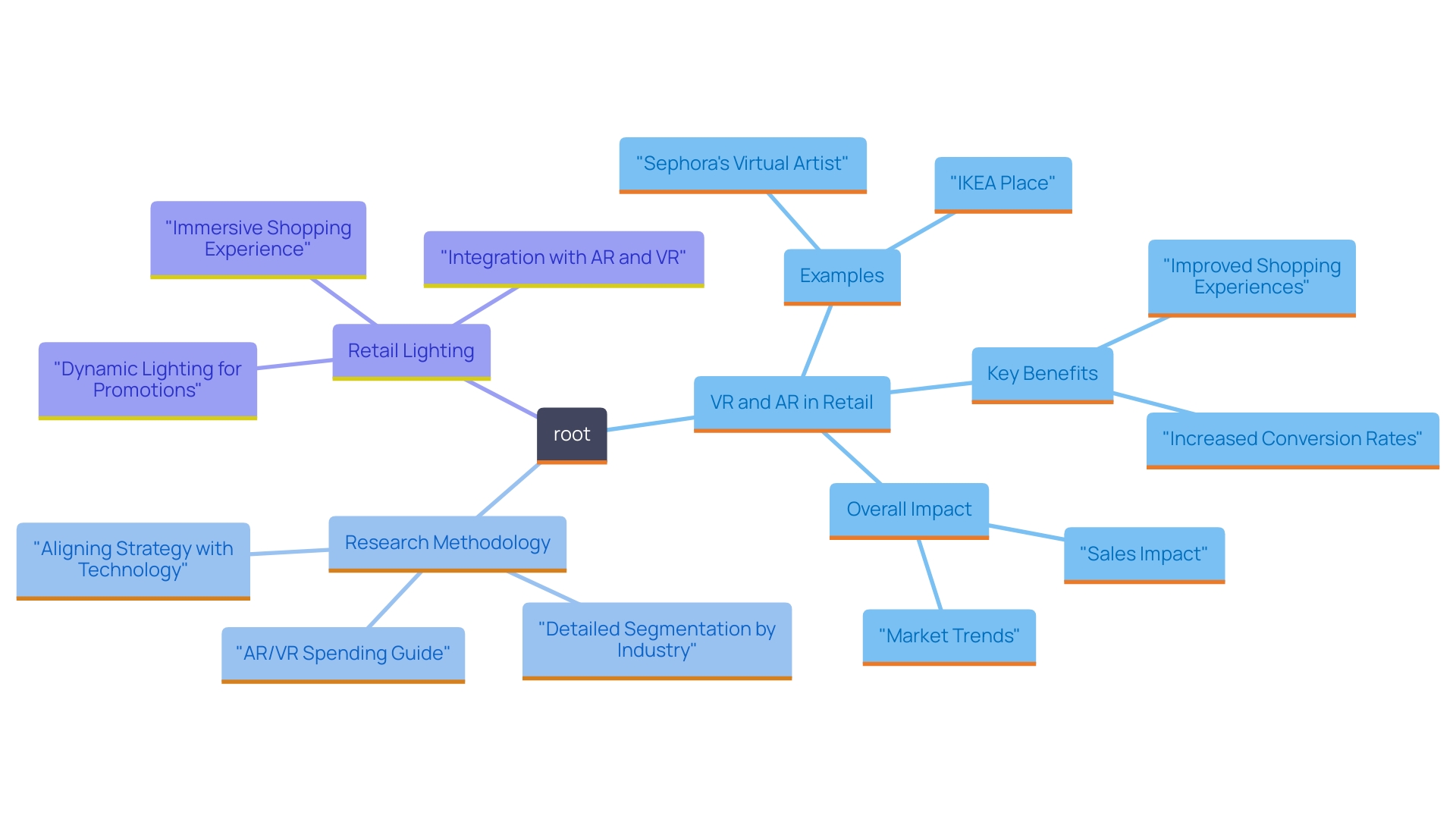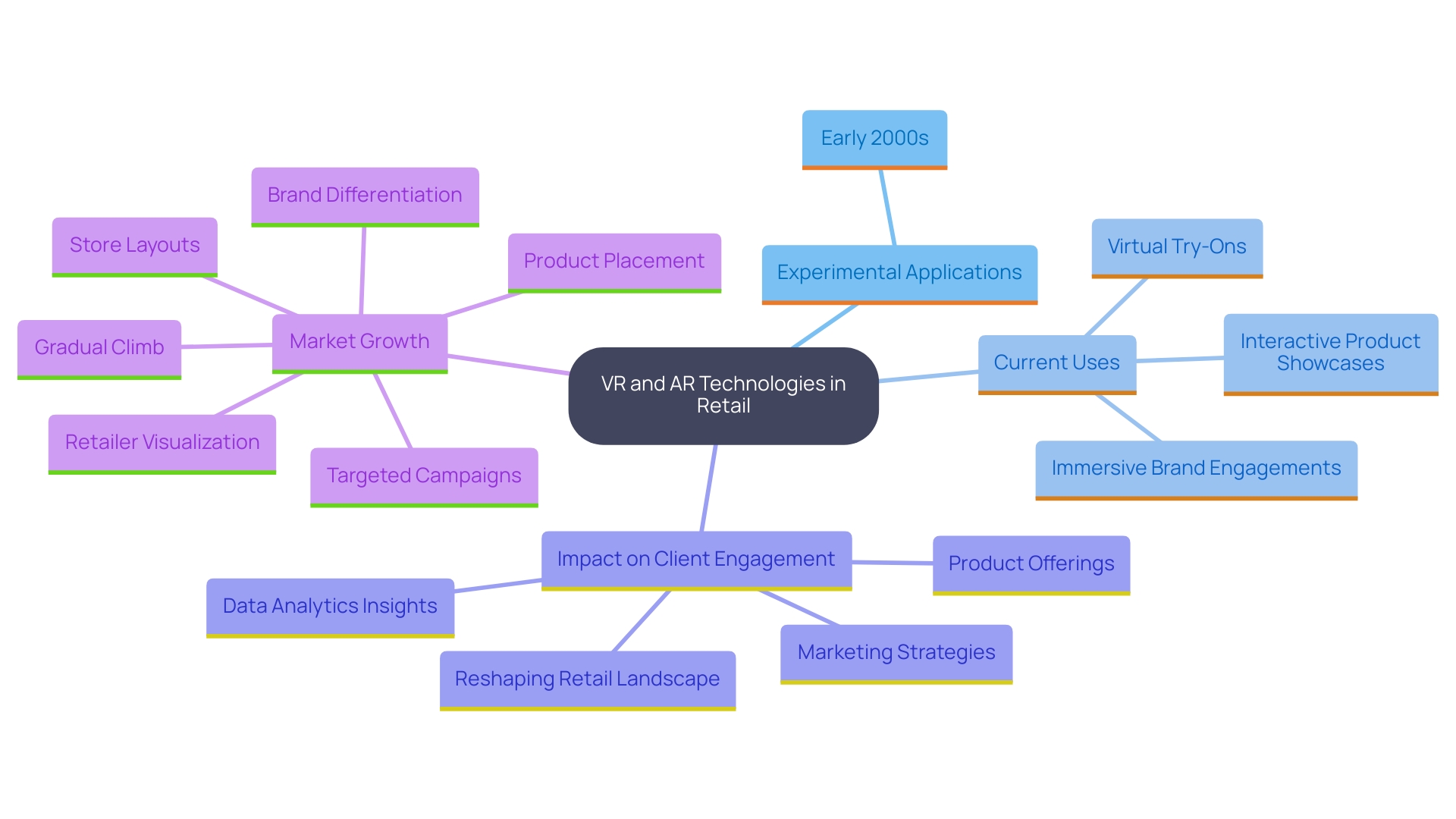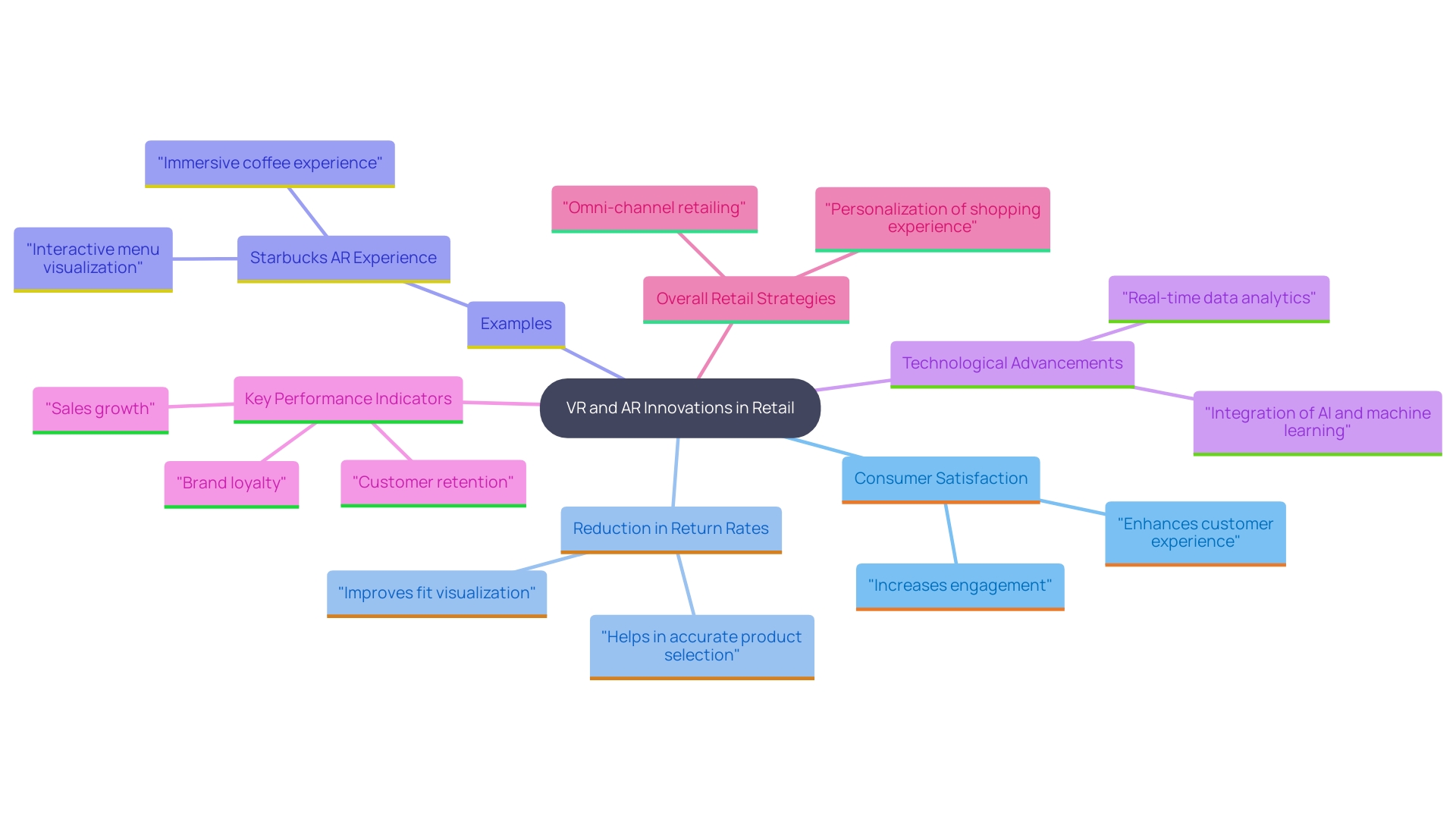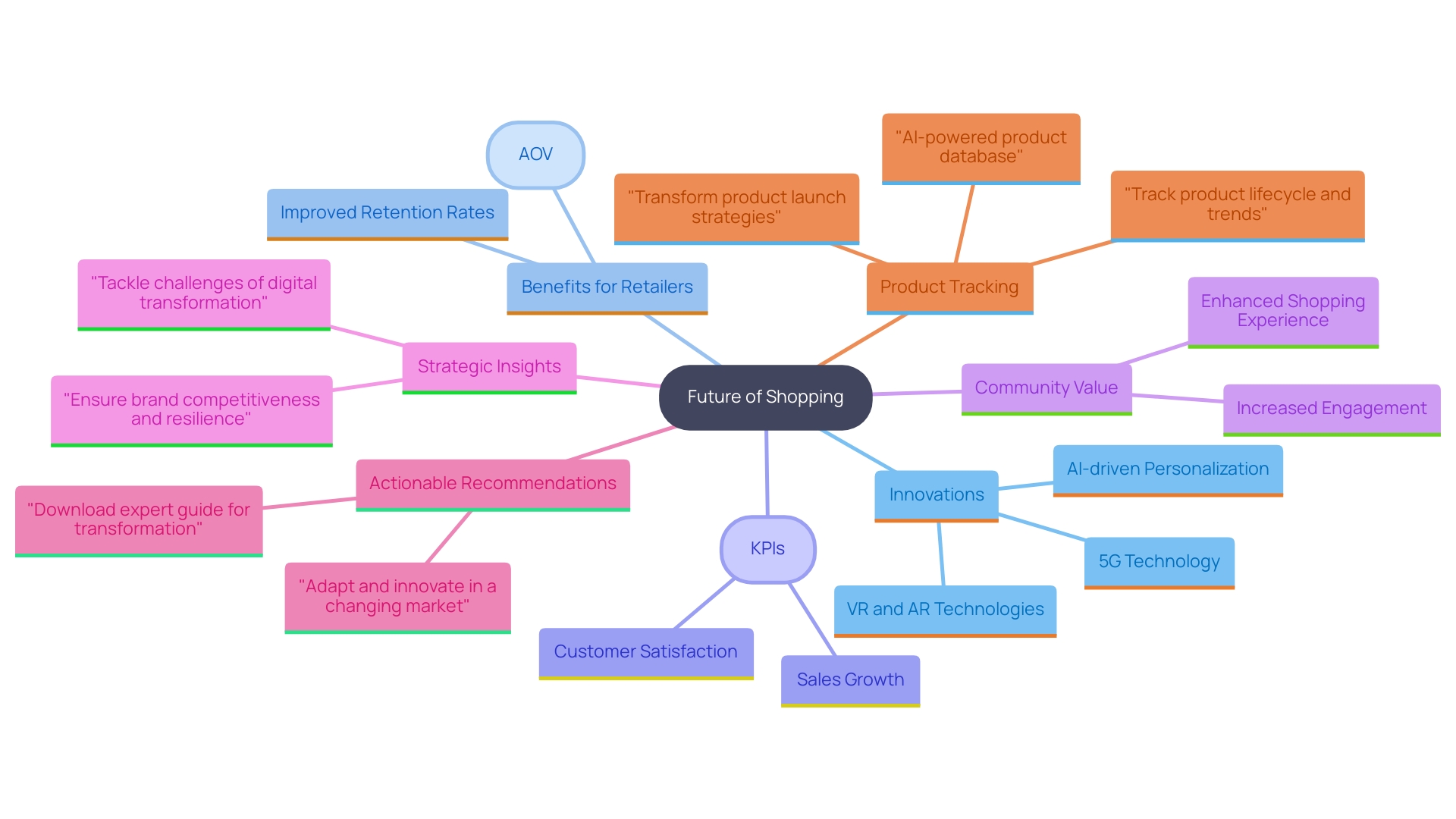Introduction
As the retail landscape undergoes a seismic shift, Virtual Reality (VR) and Augmented Reality (AR) have emerged as transformative forces, redefining how consumers engage with products. These cutting-edge technologies not only bridge the gap between the physical and digital realms but also enhance the shopping experience in unprecedented ways. From virtual try-ons that allow customers to visualize products in their own spaces to immersive environments that captivate and inform, VR and AR are revolutionizing the retail experience.
With a growing body of evidence supporting their impact on sales and customer satisfaction, it is imperative for retailers to understand and leverage these innovations. This article delves into the evolution, benefits, and future trends of VR and AR in retail, providing insights into how these technologies can elevate engagement and drive business success.
Defining VR and AR in Retail: A New Era of Shopping
Virtual Reality (VR) and Augmented Reality (AR) are pivotal technologies revolutionizing the retail industry. VR fully immerses users in a digital environment, simulating physical presence in virtual stores, allowing for exploration and interaction with products as if they were tangible. Conversely, AR enriches the real world by overlaying digital information, offering enhanced interactivity and context.
For instance:
- Sephora's Virtual Artist allows users to virtually try on makeup products.
- IKEA Place enables customers to visualize furniture placement in their living spaces.
These applications not only aid in making more informed purchasing decisions but also significantly improve the shopping process. Notably, studies have shown that AR can increase conversion rates by up to 40%, underscoring its potential impact on sales.
Recognizing these technologies' capabilities is crucial for retailers aiming to elevate engagement, especially as 70% of technology leaders believe that AR will surpass VR in market revenue. By utilizing VR and AR, retailers can create engaging environments that attract customers and drive sales.
Our tailored e-commerce solutions, supported by over 20 years of global experience, have a proven track record of improving critical KPIs like retention rates and Average Order Value (AOV). By incorporating these innovative solutions, we assist businesses in not only creating community value but also generating additional revenue, further strengthening their market position.

The Evolution of VR/AR Technologies in Retail
The journey of VR and AR in retail began with experimental applications in the early 2000s, primarily in gaming and entertainment. As technology progressed, retail giants acknowledged the potential of these tools for enhancing client engagement and driving key performance indicators (KPIs). By the mid-2010s, companies such as IKEA introduced AR applications that enabled individuals to visualize furniture in their homes, showcasing a customized e-commerce approach that aligned with community needs.
For example, our own approaches have allowed retailers to boost client retention by 25% through engaging shopping interactions. Over the years, the advancements have become more accessible, with improvements in smartphone capabilities and the rise of affordable VR headsets.
Today, retailers are increasingly embracing VR/AR solutions for: - Virtual try-ons - Immersive brand engagements - Interactive product showcases
All intended to reshape client interactions and enhance community value. As we look to the future, our commitment to innovation in VR and AR will continue to drive significant enhancements in user engagement and sales, solidifying our position as leaders in the e-commerce landscape.

Enhancing Customer Experience: Benefits of VR/AR in Retail
VR and AR innovations are transforming the retail environment by greatly improving consumer experiences. These innovative tools provide a unique and immersive way for consumers to interact with products, leading to higher levels of satisfaction and loyalty. For example, retailers employing virtual fitting solutions can effectively lessen the uncertainty of online shopping, enabling shoppers to envision how products appear and fit prior to making a purchase. This not only boosts confidence in buying decisions but also substantially decreases return rates, ultimately enhancing key performance indicators (KPIs) such as retention rates and Average Order Value (AOV).
Mark Zuckerberg emphasizes the transformative potential of these innovations, noting that major technological waves such as AI and the metaverse are essential to the future roadmap. Real-world applications, such as the Starbucks AR Experience, illustrate the effectiveness of these innovations. By implementing AR markers that customers scan to unlock interactive visual content and product information, Starbucks has improved customer satisfaction, resulting in increased repeat visits.
Moreover, insights from industry professionals specializing in Web3 emphasize the importance of nonlinear storytelling and the barriers to entry in this space. These expert opinions reinforce the notion that VR and AR are not just fleeting trends but are poised to become critical components of retail strategies. For instance, studies indicate that 70% of consumers report higher satisfaction when using VR for shopping, highlighting the significance of these tools in creating engaging experiences. This aligns with our commitment to building tailored solutions that generate community value and enhance internal goals.
Statistics further support the advantages of these innovations. The implementation of virtual try-on technologies has been shown to reduce return rates significantly, with some retailers reporting a decrease of up to 30%. Such data highlights the tangible effect of VR and AR on client satisfaction and operational efficiency in retail, illustrating how approaches tailored to specific needs can transform industries.
In conclusion, VR and AR provide substantial advantages for improving customer interactions in retail. They provide engaging and memorable interactions, reduce return rates, and amplify brand visibility through social media sharing. As these technologies keep advancing, their incorporation into retail strategies will likely become more crucial for maintaining competitive edge, utilizing our 20+ years of unmatched knowledge in providing significant outcomes.

The Future of Shopping: Trends and Innovations in VR/AR Retail Experiences
The future of shopping is set to be increasingly shaped by innovations in VR and AR, particularly through tailored e-commerce solutions that enhance critical KPIs and community value. Emerging trends include mixed reality environments where shoppers can fluidly move between physical and digital interactions.
Retailers are also utilizing AI-driven personalization within AR applications, enabling customized shopping interactions that cater to individual preferences and behaviors. With more than 20 years in the field, we have enabled various businesses to enhance retention rates and increase Average Order Value (AOV) through our innovative solutions.
Additionally, advancements in 5G technology will significantly enhance the performance of VR and AR applications, facilitating real-time interactions and richer content experiences. Retailers that embrace these trends will not only meet evolving consumer expectations but also secure a competitive edge in the dynamic retail landscape.

Conclusion
The integration of Virtual Reality (VR) and Augmented Reality (AR) into the retail industry marks a significant transformation in how consumers interact with products. These technologies provide immersive experiences that not only enhance customer engagement but also improve key performance indicators such as retention rates and Average Order Value. From virtual try-ons to interactive displays, VR and AR are reshaping the shopping experience, making it more personalized and visually compelling.
As the evolution of VR and AR continues, retailers must recognize the importance of adopting these innovations to stay competitive. The substantial benefits—ranging from reduced return rates to increased customer satisfaction—demonstrate that these technologies are not mere trends but essential tools for modern retail strategies. Companies that leverage VR and AR effectively position themselves to meet the demands of today’s tech-savvy consumers.
Looking ahead, the future of shopping will increasingly rely on the advancements in VR and AR, propelled by emerging technologies like AI and 5G. Retailers that embrace these innovations will be better equipped to create tailored, engaging experiences that resonate with their customers. The path forward is clear: to thrive in the evolving retail landscape, it is crucial to harness the power of VR and AR, ensuring that businesses not only survive but flourish in this new era of shopping.





